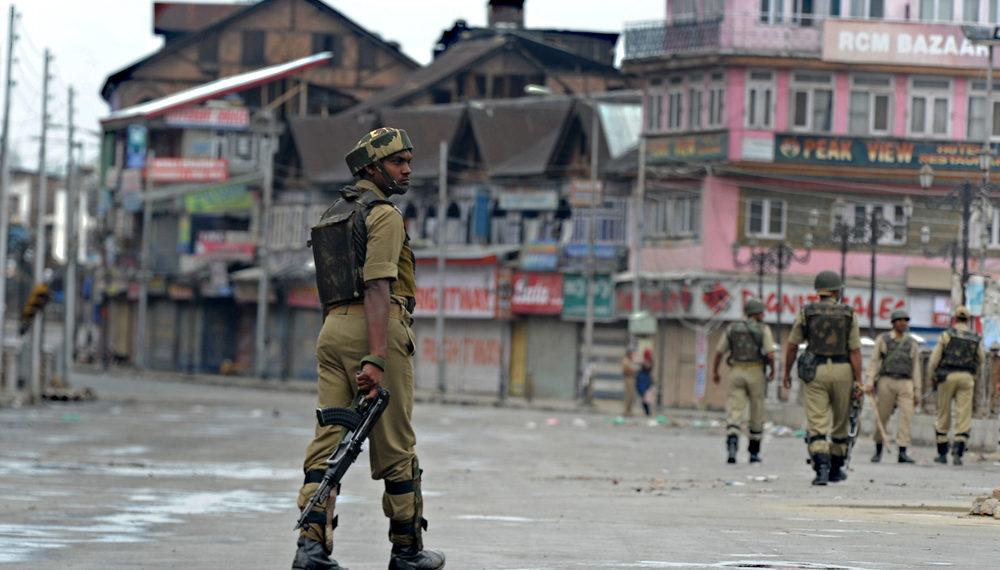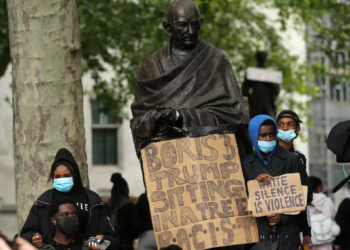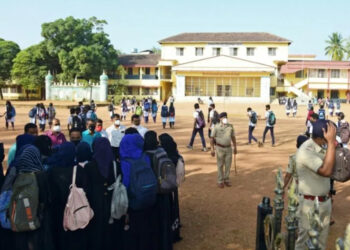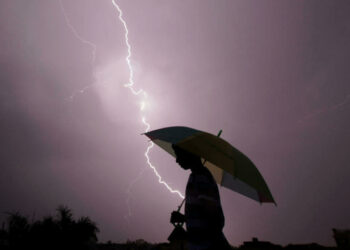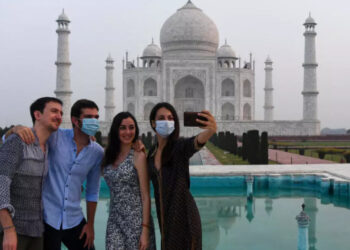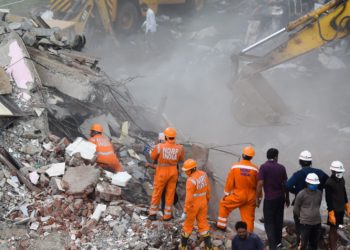In November, the 20-month-old Hiba Jan became the youngest victim of the ongoing separatist conflict in India’s Kashmir region. A pellet-firing shotgun hit her in her right eye inside her home. Doctors treating the girl said she might never be able to see again with that eye.
Baby hiba with pellet wounds in her eye!How it hurts to see her like this Pray for her speedy recovery ! The price that even our babies are paying as the conflict continues.. pic.twitter.com/EeraibGOCi
— Mirwaiz Umar Farooq (@MirwaizKashmir) November 25, 2018
Hiba is just one of the many victims of the conflict that in 2018 with at least 586 killings has been the bloodiest of the last decade. Among the deaths were 160 civilians, 267 militants, and 159 members of the armed forces and police. As another year ends, it leaves behind a trail of blood but no signs of a peaceful resolution.
Over the last ten years, it has always been the same cycle of killings endlessly repeated in this disputed Himalayan region. And it always achieves the same results: more graves in Kashmir, more burials of Kashmiri youth.
As no headway is made to resolve the decades-old conflict, another young generation gets consumed in its flames. They have grown up amidst the violence and the military siege imposed by the Indian state. Their idea of peace is a pause between killings, encounters, and crackdowns.
Humanitarian Toll
Since 1947, Kashmir has been a disputed region between India and Pakistan. India controls nearly 55 percent of the territory, while Pakistan controls almost 40 percent. The remaining territory is under Chinese control.
India and Pakistan have fought three wars over the region. A popular insurgency broke out in Kashmir valley in the late 1980s, but within years the Indian government crushed it with a military crackdown, resulting in widespread human rights violations. The violations continue to this day, and civilians bear most of the brunt.
Since 1990, more than 70,000 people have been killed, and more than 8,000 people have been subjected to enforced disappearances. Thousands of people have been arrested and detained under draconian laws. Civilian killings near encounter sites have seen an uptick in the last three years since the assassination of popular armed commander Burhan Wani in July 2016.
In recent years, people have often come out to protest during encounters that break out between Indian security forces and militants. Each time the government forces, apart from killing a few militants, blast the houses they’re holed up in. They don’t hesitate to use live ammunition, directly firing bullets and pellets at unarmed protesters.
Meaningless Probes
People are so disillusioned with the state and distrustful to Kashmir’s judicial system, that the word “probe” has disappeared from their lexicon. They’ve stopped asking for probes into civilian killings and seeking justice from the system. They know from experience that the state protects those who pull the trigger and that perpetrators easily get away with their actions. They enjoy legal impunity provided by draconian laws like the Armed Forces Special Powers Act.
After each civilian killing, the government’s statement of initiating probes rings hollow and meaningless. Not one of the civilian killings since the 2016 uprising – in which over 90 civilians were killed and over 1,000 blinded – has been fully probed, neither have those involved been brought to book or been punished. In the last decade, the Kashmir government has ordered at least 107 inquiries into civilian killings, but until this day not a single perpetrator has gone on trial.
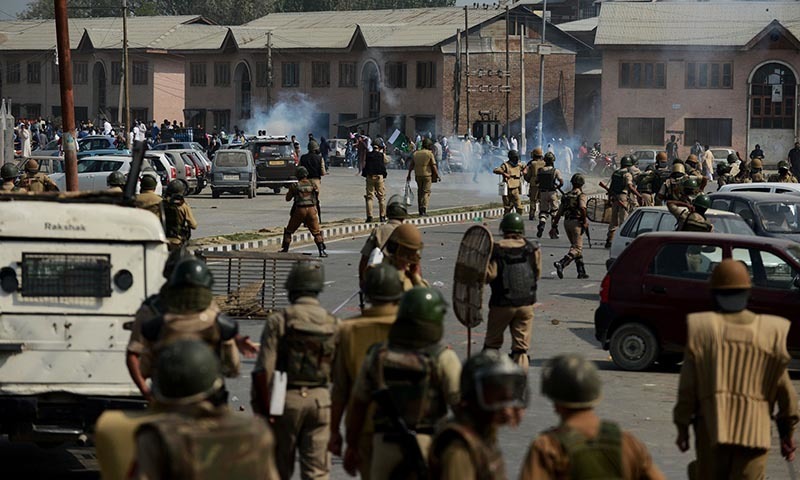
In June this year, the U.N., whose team the Indian state denied direct access to the Kashmir region, came out with an alarming and first-ever report on the deteriorating political and military situation in Kashmir that extensively detailed the human rights. In response, the Indian government dismissed the report, questioning its intention and calling it “fallacious, tendentious, and motivated.”
Over the years, Kashmir’s military siege has remained intact. More bunkers, checkpoints, and army camps have been set up in civilian areas. The armed forces are everywhere – occupying streets, neighborhoods, cinemas, schools, bridges, hotels, and hospitals.
Ending the Conflict
The conflict is sought to be managed from the central government in New Delhi, that dispatches interlocutors to hold meetings, buy some time, and talk to people, regional parties, and groups in Kashmir without making any headway towards a meaningful dialogue. Their talks offered to “separatists” begin with a rider of “talk within the ambit of the Indian constitution,” which soon hits a dead end in Kashmir. In the end, the status quo is maintained. The Indian state is unwilling to demilitarize even civilian areas. The interlocutors become irrelevant in Kashmir.
The mainstream pro-Indian parties in Kashmir have done little except for looking for opportunities to somehow come to power and serve their own interests instead of the people’s. Once in power, they are either complicit in using of force and civilians’ deaths, or at best “regret” the use of live ammunition by government forces against unarmed civilians and protestors.
Once out of power, the only thing they can do is issuing meaningless statements of “condemnation and grief” over civilian deaths. Bereft of any legitimacy among people, these parties derive their legitimacy – and a momentary sense of power – from the central government in New Delhi. In the eyes of people in Kashmir, these parties and politicians do the bidding of New Delhi.

In recent years, regional parties like Peoples’ Democratic Party (PDP) and National Conference (NC) have presided over their respective share of civilian killings. For example, over 100 civilians were killed by government forces during the 2010 uprising when the NC regime was in power, and about 90 civilians were killed during the 2016 uprising when the PDP-BJP government was in control. The successive state governments have been unable and unwilling to punish the guilty armed forces involved in the killings.
Caught in an endless cycle of violence, Kashmiris have little hope of getting some respite from the bleak situation that is kept under wraps by the Indian state and largely forgotten and ignored by the rest of the world. And yet the people in Kashmir look towards international bodies and rights organizations to intervene and prevail on the Indian government to end the military siege.
Apathetic Indian Society
The growing Indian middle class and its civil society, except for some individual voices, is largely apathetic towards the human and political rights of the people in Kashmir. They have unquestionably accepted the state narrative of “terrorists versus soldiers,” which has been repeatedly propagated by mainstream Indian media and the state’s corporate-funded electronic media.
Instead of questioning and holding their governments and rulers responsible for the state of affairs in Kashmir, Indians question the people of Kashmir and hold them accountable for their plight. They even label them as “anti-nationals” who, as they say, are “misled” by Pakistan.
The Indian nation seems unable to see Kashmir beyond the “beautiful” backdrop a few days of their summer holiday, let alone educating themselves about the ground realities or questioning and protesting against their government and the army on the rising civilian killings in Kashmir.
Besieged Youth
As civilian killings mount and pellet guns blind more youth, including teens and even children, people in Kashmir are even deprived of mourning properly for young lives cut short by bullets. The intervals between two funerals keep getting shorter, but the peoples’ memory remains sharp. They can clearly identify the perpetrators, unanimous in their desire to break free of the oppressive state that is forcibly keeping them against their wishes. They remember each death, refusing to stay quiet, forget, or give up asking for their political rights.
Prominent novelist Arundhati Roy, a rare Indian voice who speaks about the rights of Kashmiris, aptly sums up the anger of people in Kashmir her latest novel:
One day Kashmir will make India self-destruct in the same way. You may have blinded all of us, each one of us, with your pellet guns by then. But you will still have eyes to see what you have done to us. You are not destroying us. You are constructing us. It is yourselves that you are destroying.
Stripped of any moral authority, the Indian state is unrelenting in its grip of the grief-stricken people in Kashmir. It continues to enforce restrictions on their movements, mourning assemblies and protests, and snapping their internet and communication lines, in short, keeping the people besieged with nothing but force.
But the fact remains that no state can kill its way into forever ruling over people against their wishes. And no people can be forced to live at peace with their perpetrators. In the end, the peoples’ genuine aspirations will triumph over the power of the state.
Disclaimer: The views and opinions expressed here are those of the author and do not necessarily reflect the editorial position of The Globe Post.

